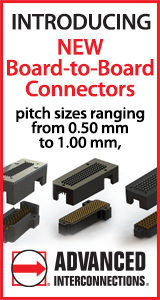|

|
Aerosol Jet Printing of Electronics: Technology for Wearable Devices
Production Floor |
|
Authored By:Casey Cooper, Bruce Hughes Intuitive Research and Technology Corporation, CCDC Aviation & Missile Center Huntsville, AL, USA SummaryAdditive manufacturing has revolutionized the way products are designed and fabricated to include the field of printed electronics. Direct write (DW) technologies used to print three-dimensional (3D) electronic and sensor devices have experienced spectacular growth due to their capability to offer rapid prototyping of high-performance devices for a broad range of applications. This growth is driven by many factors to include significantly reduced design-to-product lead time and fabrication of complex geometries on conformal and flexible substrates. Originally developed by the Defense Advanced Research Projects Agency (DARPA) Mesoscopic Integrated Conformal Electronics (MICE) Program for the fabrication of mesoscale electronics, DW technologies have been explored for a range of applications including active and passive components, sensors, 3D structures, as well as applications in biology. This paper focuses on one emerging DW approach, Aerosol Jet Printing (AJP), as a non-contact method to print fine features using different types of materials over various surfaces. Aerosol Jet systems are able to print a wide variety of electronically, optically, and biologically functional materials on geometrically complex substrates that can be conformal, flexible, and stretchable. The Aerosol Jet process utilizes printable inks based on solutions or nanoparticle suspensions and can include metals, alloys, ceramics,polymers, adhesives, and/or biomaterials. A wide variety of substrates, to include silicon, polyimide, glass, FR-4 and aluminum oxide can be used to print these materials provided the ink is compatible with the substrate. Like other DW technologies, the AJP process offers the distinct benefit of fabrication without conventional masks, with a reduction in material consumption due to selective deposition of inks at digitally defined locations on the substrate. Use of this additive process eliminates the waste of hazardous materials used in the etching processes employed by subtractive methods. AJP systems use an atomizer to create a dense aerosol of micro-droplets that are focused into an aerosol stream, resulting in deposits that can be one tenth the size of the nozzle opening at a standoff height of up to 5 millimeters. These capabilities enable the fabrication of highly integrated devices expanding from the originally targeted mesoscale application to micro- and nano-scale applications. Design and innovative fabrication of more connected and “smart” products can be realized using AJP to meet the miniaturized, flexible, and conformal form factors desired in today’s Internet of Things (IoT) global marketplace. AJP technology has opened up new avenues for bio-integrated electronics to include electronic textiles, wearable electrochemical systems, electronic epidermal tattoos, and permanent and dissolvable implantable devices. While it has been demonstrated that AJP is an enabling technology in the growing field of wearable devices, there are major challenges in widespread adoption of this innovative approach. This paper provides an overview of AJP technology and summarizes the historical underpinning of its development, underlying principles of its technique, and challenges presented in widening its adoption with industry. ConclusionsA broad-brush review has been presented of manufacturing techniques developed to print electronics in an additive approach without the use of masks and harmful etching chemicals typical of subtractive processes. The DW methods described vary in their capabilities to address different facets of printed electronics to include 1D to 3D printing as well as writing on conformal, flexible and stretchable substrates. Among the group of DW methods, the flow-based direct write approach using AJP technology shows great potential for printing fine feature conformal, non-planar features for highly integrated devices. Much work has been performed to date using AJP technology for the fabrication of 3D printed electronics. Materials formulations and the processes used to deposit the ink on the substrate are key to achieving the functional performance and reliability needed across system application domains. Continued work is still needed in developing new materials and refining processes to support maturation of these methods thus enabling these techniques to become more readily adopted. DW methods have a wide application window from prototyping through low-to-high level production. The various electronic devices printed to date using DW techniques are evidence these methods will be a key driver in accomplishing rapid prototyping and manufacturing of electronics and sensors, to include bio-integrated electronics. New applications are being announced regularly in this emerging technology area. AJP technology, along with other DW techniques, will enable the additive manufacturing of next-generations miniaturized and rugged electronics on nonplanar, conformal, and flexible substrates. The high demand for IoT electronics and sensors is a key driver for taking advantage of the benefits of rapid prototyping, highly integrated, and substrate-agnostic printing capability using DW methods. The field of personalized IoT includes wearable devices in small, lightweight, and conformable form factors and is expected to grow into a $46B business by 2024. The emergence of FHE leveraging DW techniques is a primary enabler of bringing electronics off rigid printed circuit boards and fitting them to the contours and movement of the human form. The work samples presented in this paper are but a few of the many biointegrated electronics devices with end applications in consumer electronics, healthcare (sports, fitness, and wellness), defense, aerospace, and automotive. Initially Published in the SMTA Proceedings |
|
Comments
|
|
|
|
|


